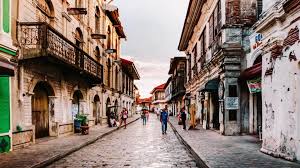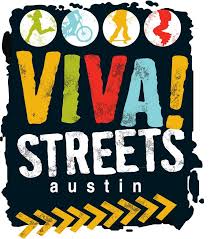- Introduction to Urban Life and Viva Streets Concept
- The Benefits of Living in an Urban Area
- The History and Evolution of Viva Streets
- How Viva Streets Promotes Community Engagement
- Successful Examples of Viva Streets Around the World
- Overcoming Challenges in Implementing Viva Streets
- Ways to Get Involved and Support the Viva Streets Movement
- Conclusion: Embracing the Joy of Urban Life through Viva Streets
- FAQs:
Introduction to Urban Life and Viva Streets Concept
Metropolitan living can be described in many ways. However, careful consideration indicates that various resources, people, and activities mainly characterize it. Such high-octane activity is exhilarating as cheerful voices, music, and a display of creativity light up the streets.
Put in this way, Viva Streets is an initiative aimed at making streets lively with activities that the residents take up and enjoy. Visualize pedestrians strolling through voids typically flooded with vehicles, which now house gorgeous art, marketplaces, and gatherings. It is so commonplace that revitalizing the cities is not the end, but somehow, it is part of an integrated approach to unite the community.
As the world’s megacities become more populated and highly teched up, accepting concepts like Keene’s Viva Streets become inevitable to feel the need for public spaces now primarily perceived as places of annoyance. Welcome into this thrilling adventure of exploring the places, enjoying the abstract culture built by communities, and making them work as one.
The Benefits of Living in an Urban Area
The people in any big city can be described as complete and exciting. In every creative city in the world, there is life that never sleeps. Whatever your interests in the world of culture or art or the form of music, there are activities for all. There is the perk of accessibility.
Commuting is also made easier as there are public transportation systems and there is no need for private cars. This cuts expenses and helps conserve the environment in terms of pollution. However, it is often the case that urban cities possess enumerating diversity and are an all-inclusive center of many cultures and dishes. This creates a unique and inclusive landscape that helps expand one’s horizons.
Besides, modern facilities within the area where you live mean stress-free living – from shopping complexes to places where you can relax, which can all be within a few minutes’ walk. Patronizing local businesses benefits the economy and allows shopping in the town instead of the mall culture, which centers around the suburbs.
The History and Evolution of Viva Streets

Viva Streets was established in response to a need to reclaim urban space for people instead of vehicles. It originated in the early 2000s when cities worldwide introduced experiments on ‘no-car day’ or street fairs. Such events often rebuild streets on the model of the Colombian ‘Ciclovía’; here, the roads, in this case, were filled with an array of activities from playing to socializing.
The public, especially those fast and busy on their feet, such as office workers, was invited to stroll around, ride, or even exercise without dealing with traffic. With increased enthusiasm, however, new cities added this idea to their distinctive culture and demands. From pop-up parks in New York City to lively street food culture in Paris – viva streets entered the homestretch of what turned into an international movement.
The focus of the Bistrot perspectives evolved as well. Now, it does not just deal with isolated temporal festivals but encourages changes to the city’s structure. The focus has further shifted from emphasizing people-friendly locations for all.
How Viva Streets Promotes Community Engagement
Viva Streets alters ordinary streets’ characteristics as it brings people activity. It encourages the residents to reclaim their space by barricading the traffic on some roads. Many people also come out for pictures, dance, drama, yoga classes, painting sessions, and performances.
This creates an unclad space where people can cultivate and share ideas. Even people within the local economy participate. They rent booths during promotional gated community events, showcase their business ideas, and get customers. Children run around and play as adults talk to people who live nearby but have not met them before.
These kinds of interactions are essential for social bonding. Empowerment is present in the event planning process as all community members trust the local governance enough to delegate them to these community owners. They control content so that programming reflects their values. Less social distance equals more trust between different groups in the neighborhood. An economically prosperous society also teaches people to value free self-expression within the public space; through this, they develop their sense of belonging.
Successful Examples of Viva Streets Around the World
The Viva Streets initiative has found great receptivity in cities around the world. For instance, in Bogota-Colombia, Ciclovia practically promotes streets free from all vehicular activity every other Sunday. Several people converge in their numbers to ride, run, or take a walk while participating in outdoor activities.
In Paris, one quiet Saturday night is replaced by “La Nuit Blanche,” all Parisians rejoice in celebrating the cultural night. Art and performance practices convert the city’s landscapes into artistic works. People have a much more pertinacious connection to their areas. Moving Local identifies another program that seeks to restrict vehicular activities within parts of cities, such as San Francisco. Car-Free Sundays at Golden Gate Park allow families to be in touch with the natural world without having to contend with cars. This is a chance to escape into nature and bond.
These practices illustrate what inner circle urbanism entails and how it can serve its intended purpose: o ’ What makes the modern societies tick? ’ each case portrays the versatility of public spaces when designed for the benefit of the human individual instead of machines. The delight people feel during these occasions helps build up social interaction between residents and the social integration of people from different communities.
Overcoming Challenges in Implementing Viva Streets
It takes work to implement Viva Streets. For example, the most noticeable hurdle is opposition from local businesses. Some are worried that closing some streets to cars may drive away customers. It is necessary to sell the overall benefit rather than just the immediate one.
Another obvious barrier has to do with the logistics. There are issues regarding the organization of events, including transportation arrangements for the public. Combining efforts with city designers can help overcome this challenge faster. There is also a question of safety. Before any initiative can be launched, safe environments for people who walk and ride bicycles should be made a priority.
Temporary fencing may be used during the events or in specific areas. The involvement of community buy-in is also a critical aspect to note. Soliciting opinions from residents through questionnaires and town meetings will help win over the locals who might have doubts that renovations of their neighborhoods are necessary. These and other challenges, however, require a lot of effort. This effort, however, results in the construction of adequate urban spaces in which all people can live in harmony and prosper.
Ways to Get Involved and Support the Viva Streets Movement
Joining the Viva Streets movement can play on more than just one’s conscience; it can be enjoyable. To do this may be the easiest way – present at some local events/activities. These activities usually involve people interested in assisting in organizing, preparing, and implementing activities on the streets.
You are also encouraged to post this on Facebook. Chronicle your experience and convince your pals to join as you are joining related activities. The more information about Viva Streets is disseminated, the stronger its service will be.
Research and form a community-based organization with the purpose of urban renewal. Talk to the local people, city authorities, and business owners about enhancing the streets for their beautification and the convenience of walking. You can volunteer your time or contribute in other ways to support organizations promoting this idea. Every little effort contributes towards creating an atmosphere for urbanism where people can relate and create.
Conclusion: Embracing the Joy of Urban Life through Viva Streets
Viva Streets invites us to live as fully as possible wherever we are. It encourages the creation of places that support the community and the community’s relationships. By making our streets fun places for the people, we glory in what a city should be.
These programs increase the rate of walking, cycling, and socializing. These programs help people remember that cities are useful as shelters and swarming with enjoyable activities. As many more communities incorporate the ideas of Viva Streets, they develop Griffith’s notion of community. Backing this trend means supporting the creation of public areas that are accessible to non-mainstream groups.
We support the romantic concept of su, ch a wall in attending or organizing these events, which is when people enjoy urban living. There is an excellent opportunity to be seized through hopes and dreams found in projects like Viva Streets. This is a work in progress, full of pregnant ideas ready to be invented by those who live in these cities.
FAQs:
What is Viva Streets?
Viva Streets is a project that aims to convert the usually lifeless city into an active space for the activities of its inhabitants, who typically move on foot or by bike, and foster social contacts.
How did people come to know of Viva Streets?
Viva streets started at the beginning of the twenty-first century as part of global practices aimed at reclaiming city spaces rather than being occupied by cars.
What is the significance of Viva Streets?
It allows residents to participate, supports small businesses, and adds value to urban environments by creating active public spaces.










